ARTICOLI
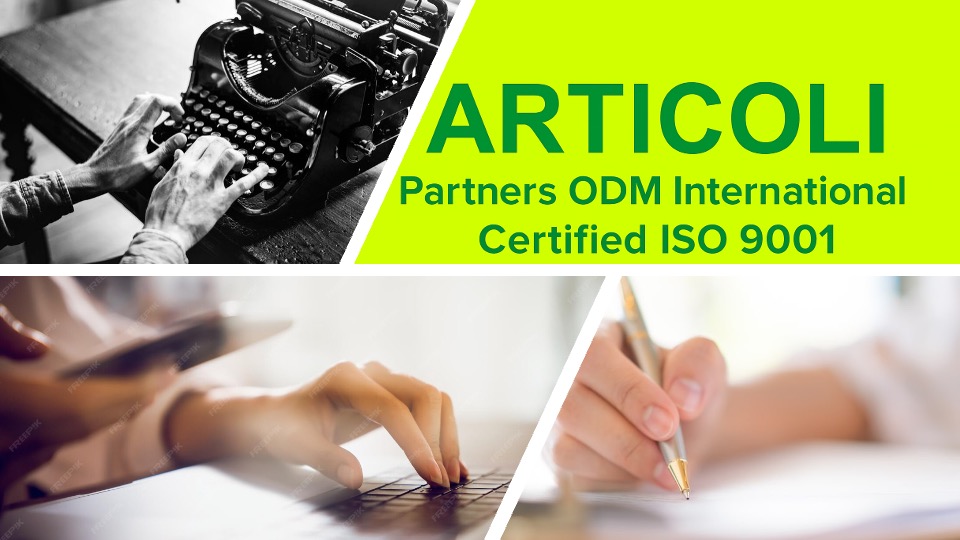
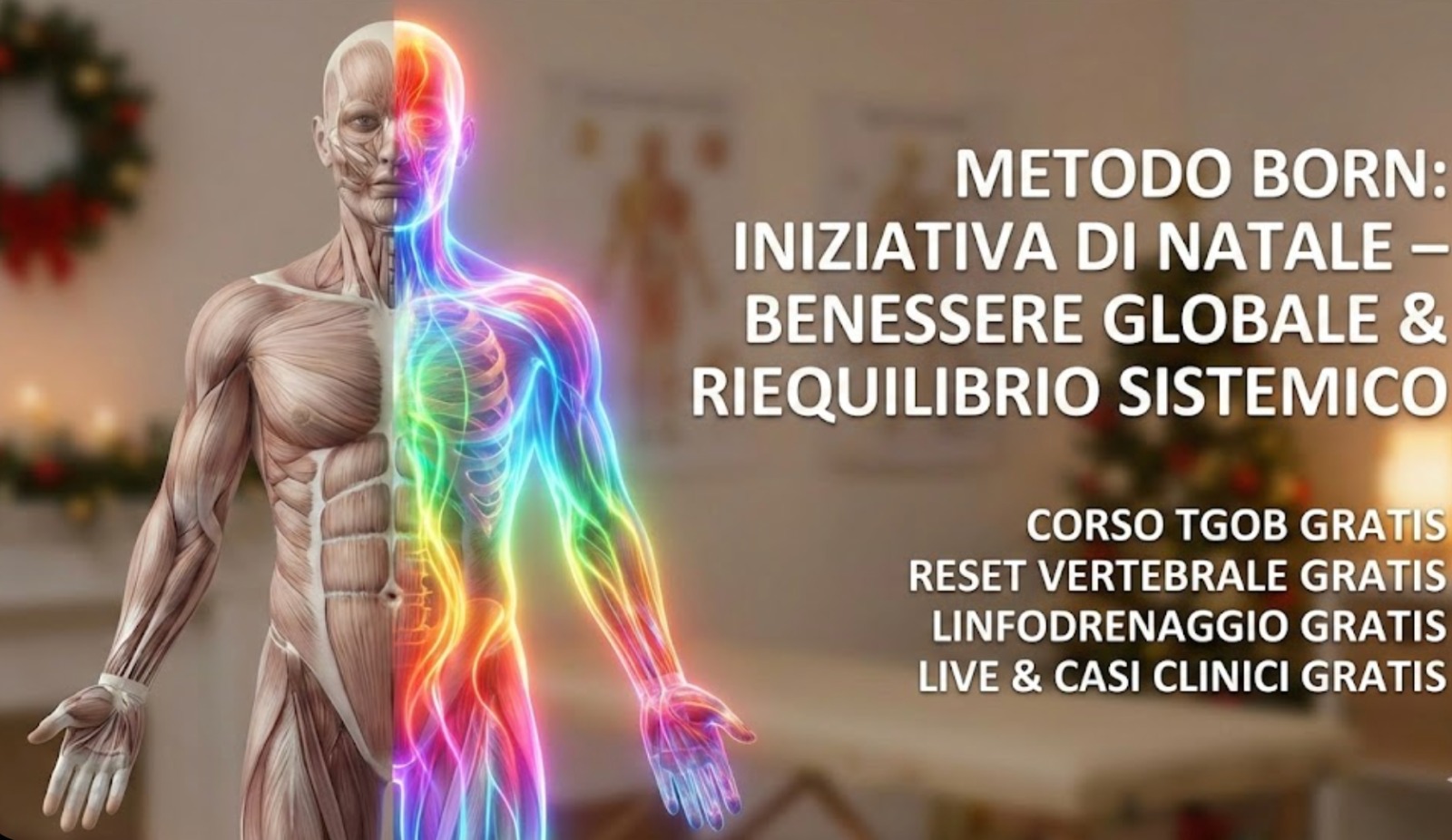
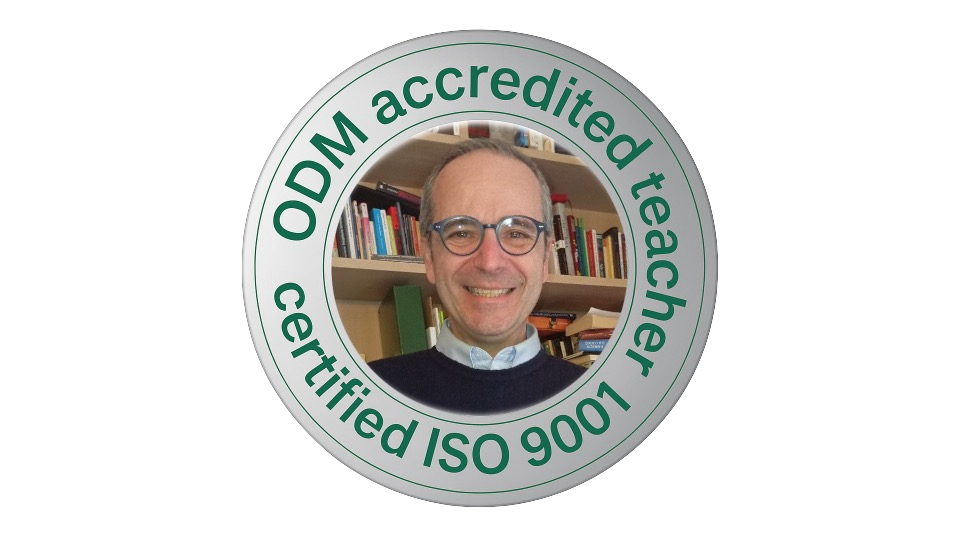
7 dicembre 2025, UN REGALO DI NATALE PER CHI SI PRENDE CURA DEGLI ALTRI
A tutti i colleghi Osteopati, Fisioterapisti, Posturologi, Riflessologi, Operatori Shiatsu, Infermieri e Medici.
Sappiamo quanto sia complesso il corpo umano e quanto sia importante avere una visione d’insieme
Nel Metodo Born, il focus è il trattamento globale di riequilibrio sistemico: guardare il paziente nella sua interezza, non solo nel sintomo.
Credo fermamente che la condivisione della conoscenza sia la chiave per far star meglio i nostri pazienti.
Per questo, a Natale, voglio fare qualcosa di mai fatto prima.
Voglio darvi accesso alle basi del mio metodo, senza niente in cambio, SOLO LA PROMESSA DEL VOSTRO IMPEGNO.
🎁 IL MIO REGALO PER VOI
✅ Corso TGOB (Trattamento Generale Osteopatico Born): GRATIS
✅ Reset Colonna Vertebrale: Come ai tempi di A.T. Still, con il mio Trust connettivale. GRATIS
✅ Linfodrenaggio 10 min: Tecnica rapida ed efficace. GRATIS
✅ 10 Live dei corsi precedenti: Per vedere la teoria applicata. GRATIS
✅ 200 Casi Clinici: Esperienza reale sul campo. GRATIS
🚀 BONUS VELOCITÀ:Ai primi 25 iscritti, invierò gratuitamente anche i miei esclusivi Appunti sul Bacino in Osteopatia.
Le iscrizioni apriranno ufficialmente prima di Natale.
I posti non sono infiniti, quindi tenete d’occhio questa pagina.
💬 Scrivi “LISTA” nei commenti se vuoi essere avvisato appena apro le porte!
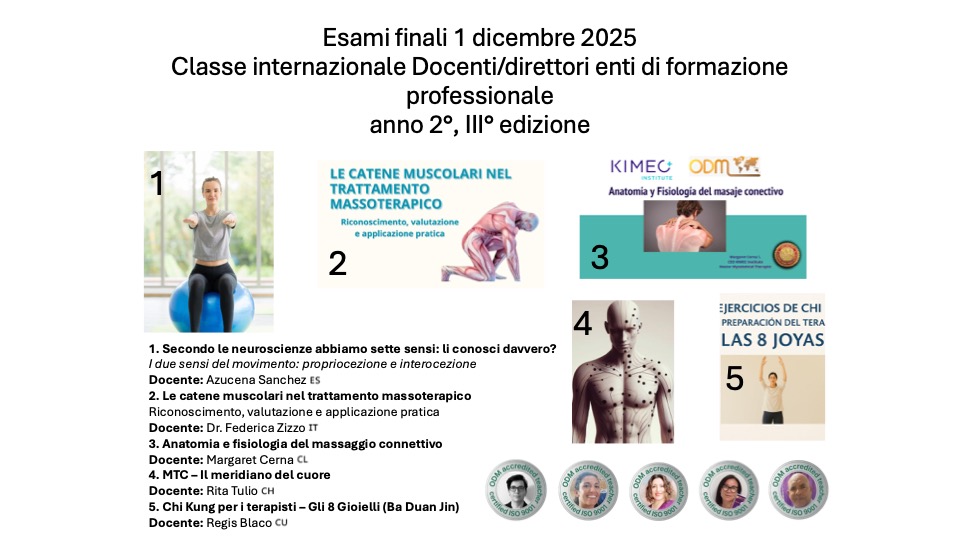
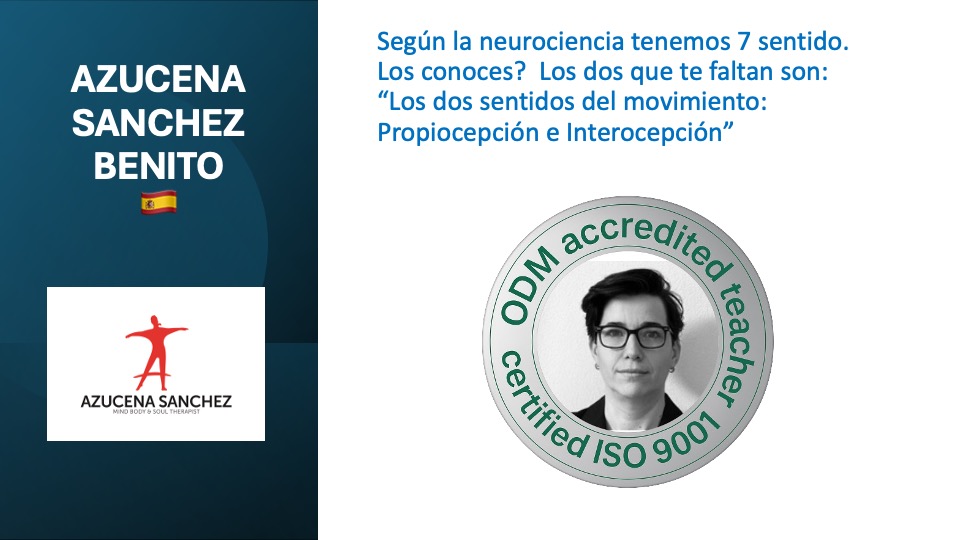
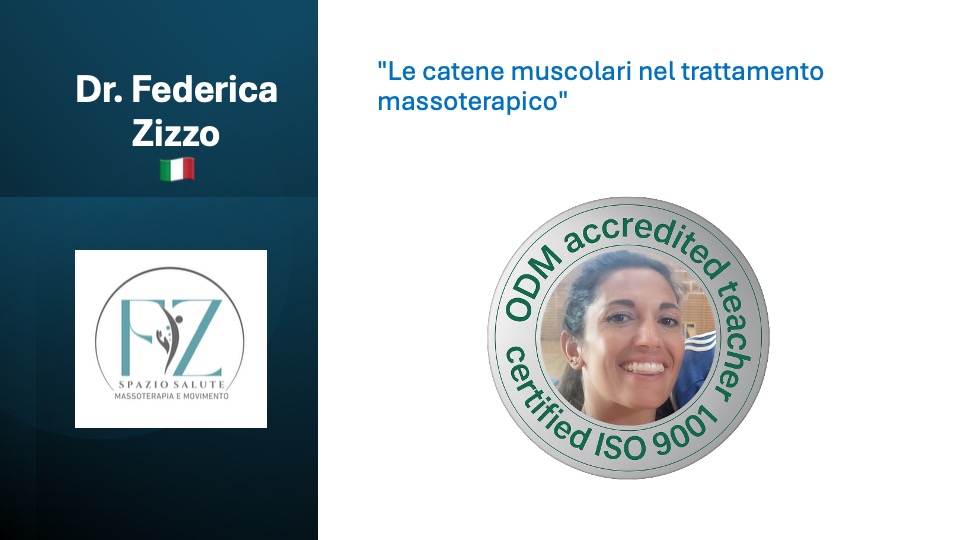
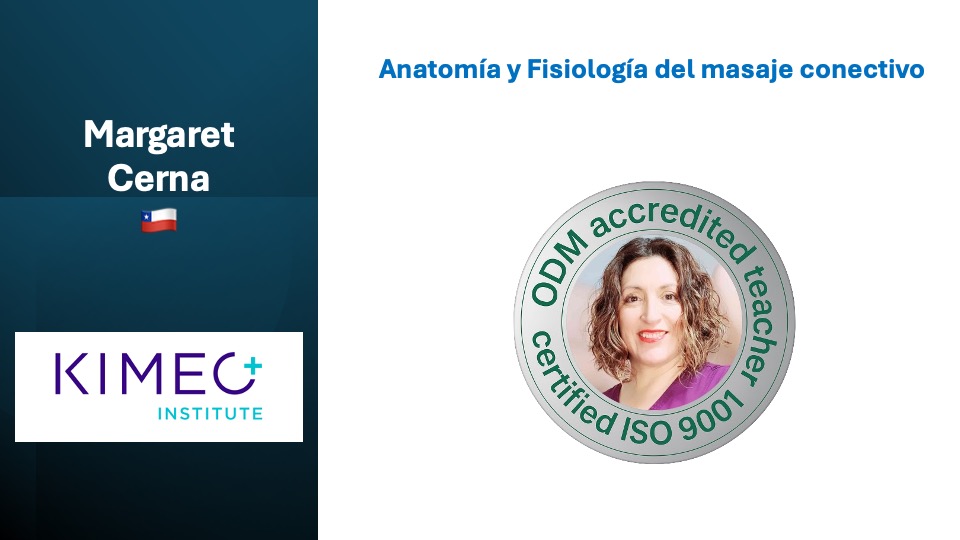
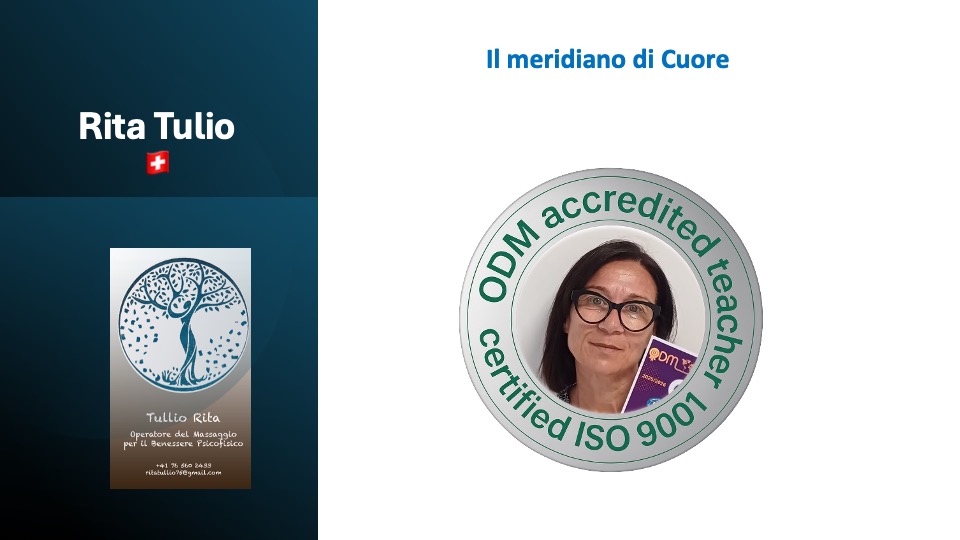
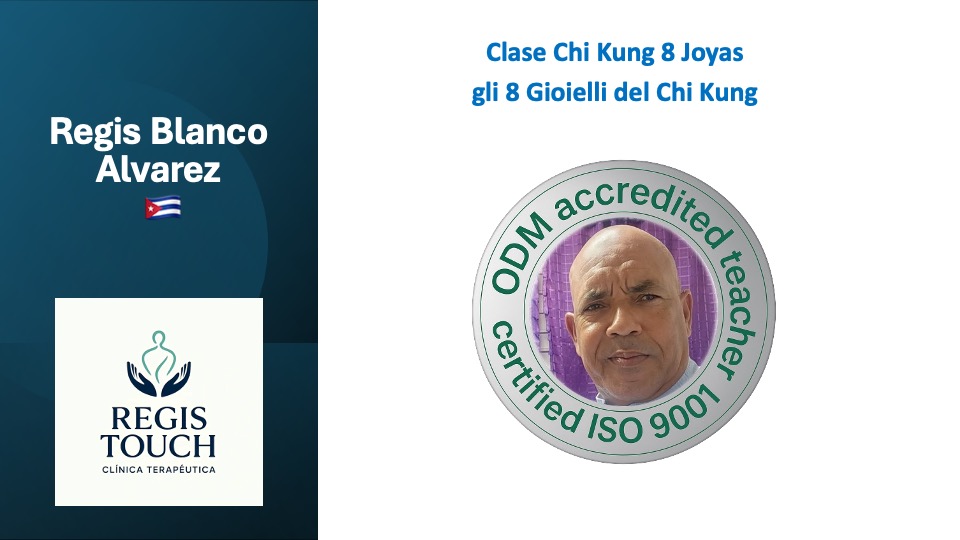
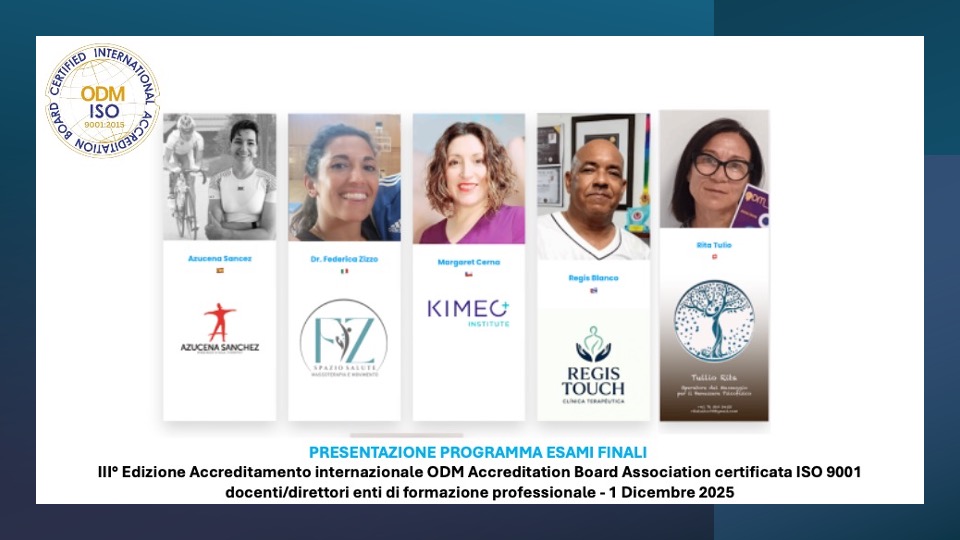
1 dicembre 2025, Accreditamento Docenti/Direttori Enti di formazione professionale Classe D, III° Edizione – luglio/dicembre 2025
ODM International Accreditation Board Association, ente certificato ISO 9001, attesta che i formatori professionali che hanno ottenuto l’Accreditamento Internazionale “Docenti e Direttori di Enti di Formazione Professionale” ai livelli di credito IQF 5 e IQF 6 hanno seguito un percorso rigoroso e conforme ai più elevati standard qualitativi.
Per conseguire questo riconoscimento, ciascun candidato ha:
seguito integralmente il percorso formativo della durata di sei mesi;
svolto tutti i compiti assegnati con puntualità e responsabilità;
superato con esito positivo l’esame intermedio;
sviluppato, presentato e discusso in aula la propria tesi per la prima parte dell’esame finale;
superato l’esame finale dinanzi a una classe di uditori composta da propri pari.
Ogni professionista accreditato rappresenta un vero fiore all’occhiello per la nostra Associazione internazionale.
ODM garantisce un sostegno continuativo attraverso servizi dedicati di consulenza, monitoraggio, valutazione e audit. L’obiettivo e’ accompagnare i Docenti e Direttori accreditati al conseguimento della Certificazione Internazionale di Competenza, un documento di eccellenza che testimonia la loro dedizione alla formazione continua e l’applicazione costante di:
principi del Sistema di Gestione della Qualità;
normative internazionali;
linee guida ODM International.
ODM adotta un modello fondato sulla meritocrazia promozionale, garantendo che ogni avanzamento professionale e ogni riconoscimento derivino esclusivamente da impegno reale, competenze dimostrate e risultati verificabili.
Congratulazioni a tutti i professionisti che si sono distinti con il loro impegno e la loro eccellenza.
2 didembre 2025, METODO BORN & STILL APP
I nervi splenici e renali provengono dalle vertebre toraciche e lombari. Nello specifico, il nervo splancnico maggiore si origina da radici provenienti dai gangli toracici (dal 5° al 9°), mentre i nervi renali sono connessi ai nervi spinali che originano dalle vertebre più basse del torace e dalla parte iniziale della regione lombare. I reni si trovano tra l’undicesima vertebra toracica (T11) e la terza vertebra lombare (L3), e la loro innervazione segmentale si riflette nella vicinanza di queste strutture alla colonna vertebrale.
Nervi splenici: Il grande nervo splancnico origina da radici dei gangli toracici da T5 a T9.
Nervi renali: Derivano da rami che originano dalla porzione che va dalle vertebre toraciche più basse (T11-T12) alle vertebre lombari (L1-L3), zone in cui si trovano i reni.
DOMANDA: Per la Ptosi renale come avrebbe ragionato il Maestro?
Come ho scritto in Osteopathy Research and Practice, per comprendere la ptosi renale (e qualsiasi problema renale), dobbiamo prima di tutto rivolgerci all’anatomia.
Il rene non fluttua nel vuoto, ma ha il suo posto preciso nel piano del Grande Architetto. Quando un rene scivola verso il basso (ptosi), dobbiamo chiederci: cosa ha permesso questo spostamento? Cosa ha indebolito i suoi supporti? E soprattutto, cosa sta ostruendo il flusso della vita verso e da esso?
La mia esplorazione non inizia dal rene stesso, ma da dove riceve la sua forza vitale e il suo comando nervoso:
Esamino la Colonna Vertebrale (dal 10° Dorsale al Coccige):
Ho osservato che nelle malattie renali, e questo vale anche per la ptosi, c’è quasi sempre una lesione, una variazione dalla normalità, tra l’ottava vertebra dorsale e la quinta lombare. È qui che nascono i nervi splancnici e renali.
Se una costola, specialmente l’11ª o la 12ª, è fuori posto (spesso spinta giù e indietro dal muscolo quadrato dei lombi), essa preme sui nervi e sui vasi sanguigni che nutrono il rene. Questo indebolisce i tessuti che dovrebbero tenerlo in posizione, permettendogli di scivolare.
Il Peritoneo e la Fascia:
Il rene è tenuto in posizione anche dal peritoneo e dalla fascia. Se c’è una tensione o una torsione in queste membrane, causata forse da una caduta o da uno sforzo, il supporto viene meno.
Il Flusso Sanguigno e Nervoso:
Un rene “caduto” stira i suoi vasi sanguigni e i suoi nervi. Questo crea congestione, stagnazione e fermentazione. Il sangue arterioso non arriva come dovrebbe per nutrire, e il sangue venoso non viene drenato via. La natura non può tollerare questo.
Il mio Trattamento (Ragionamento Meccanico):
Non userei “cinture” o supporti artificiali che indeboliscono solo i muscoli. Farei il lavoro di un ingegnere:
Aggiustamento Spinale:
Metterei il paziente a pancia in giù. Cercherei con le mie dita lungo la colonna vertebrale, specialmente nella zona dorsale inferiore e lombare. Correggerei qualsiasi vertebra ruotata o fuori asse per liberare l’alimentazione nervosa al rene.
Liberare le Costole Fluttuanti:
Prestarei particolare attenzione all’11ª e alla 12ª costola. Se sono depresse, le solverei delicatamente per togliere la pressione dai nervi renali e dal muscolo quadrato dei lombi.
Riposizionamento dell’Organo:
Con il paziente in una posizione appropriata (magari disteso o in ginocchio con il petto appoggiato, per usare la gravità a nostro vantaggio), lavorerei delicatamente sull’addome. Con mani piatte e sensibili, non con le punte delle dita che feriscono, inviterei delicatamente il rene a tornare verso l’alto, verso la sua “amaca” naturale, liberando le tensioni nel peritoneo e nella fascia che lo hanno trascinato giù.
Liberare il Drenaggio:
Mi assicurerei che non ci siano ostacoli nel percorso degli ureteri verso la vescica e che la circolazione venosa sia libera di tornare al cuore.
In Osteopathy Research and Practice (pag. 227-228 nel testo originale), ho sottolineato l’importanza di cercare la causa nella colonna vertebrale inferiore e nelle costole fluttuanti per qualsiasi disturbo renale. Se aggiusti la struttura, la funzione tornerà. Se togli la pressione dai nervi che danno tono ai legamenti e alla fascia renale, il rene avrà la forza di “stare al suo posto”.
Quindi, amico mio, non guardare solo il rene che è sceso. Guarda alla colonna, alle costole, ai nervi che hanno fallito nel loro dovere di tenerlo su. Aggiusta la macchina, dai via libera al sangue e ai nervi, e lascia che il Grande Architetto faccia il resto.
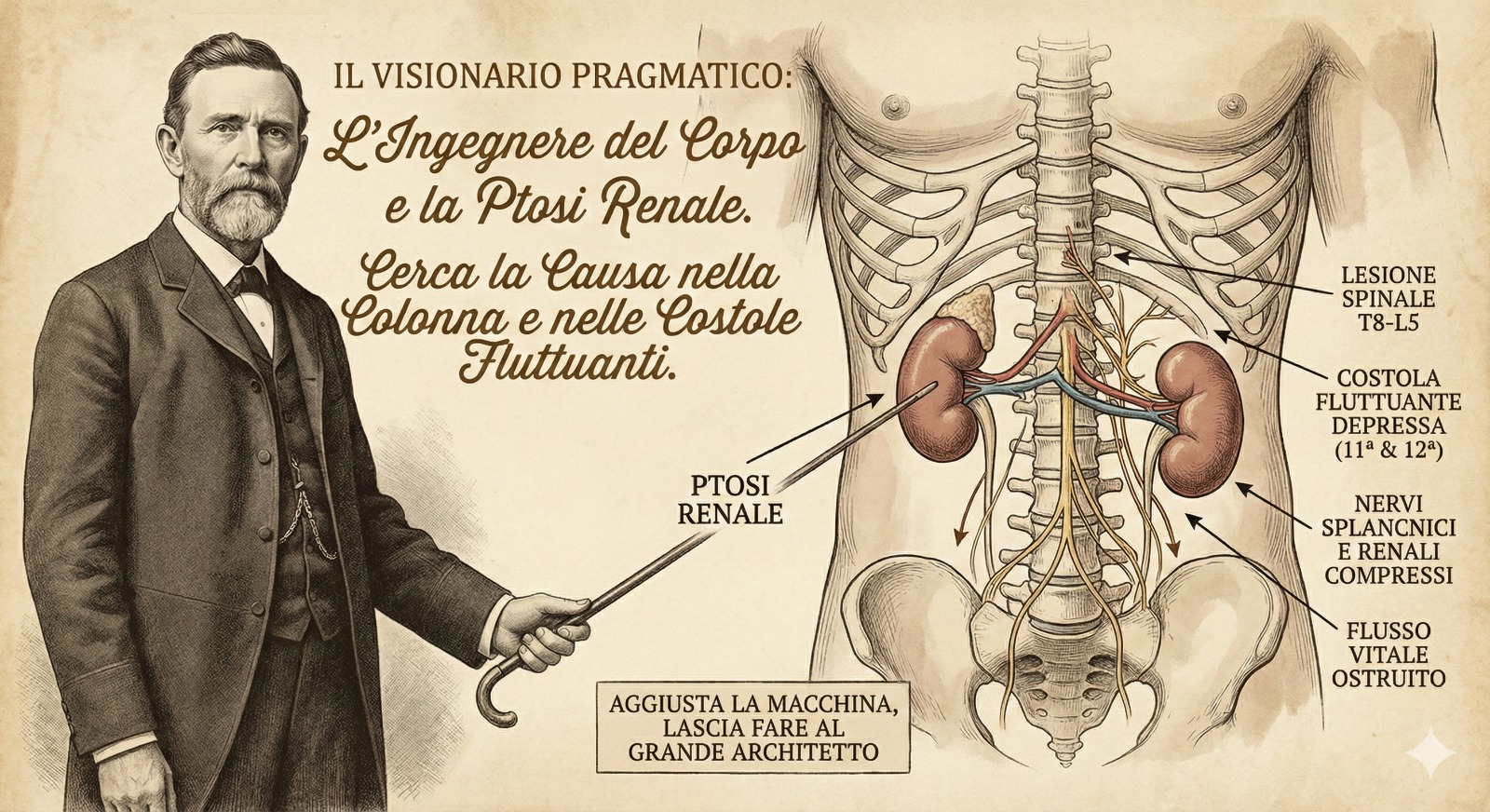

25 novembre 2025, Giornata internazionale per l’eliminazione della violenza contro le donne
Oggi è la giornata internazionale per l’eliminazione alla violenza contro le donne.
Parlare di contrasto alla violenza di genere con i professionisti che aderiscono a ODM non è una deviazione dal loro lavoro: è un’estensione naturale della cura.
Chi opera sul corpo conosce più di chiunque altro il linguaggio silenzioso dei traumi, delle tensioni, delle ferite che non sempre vengono raccontate.
La relazione dei terapisti con i loro utenti è fatta di ascolto, fiducia, continuità — e proprio lì, nelle mani che accolgono e non invadono, può emergere ciò che altrove resta nascosto.
Come donna, so quanto il corpo possa diventare campo di battaglia o luogo di rinascita. Per questo credo sia fondamentale coinvolgere e consapevolizzare i professionisti, perché possono riconoscere segnali, offrire uno spazio sicuro, orientare verso una rete di protezione.
Non devono “salvare” nessuno, ma sapere che possono essere parte del cambiamento.
Quando la cura incontra la consapevolezza, la prevenzione non è più solo un progetto: diventa responsabilità condivisa, umana, possibile.


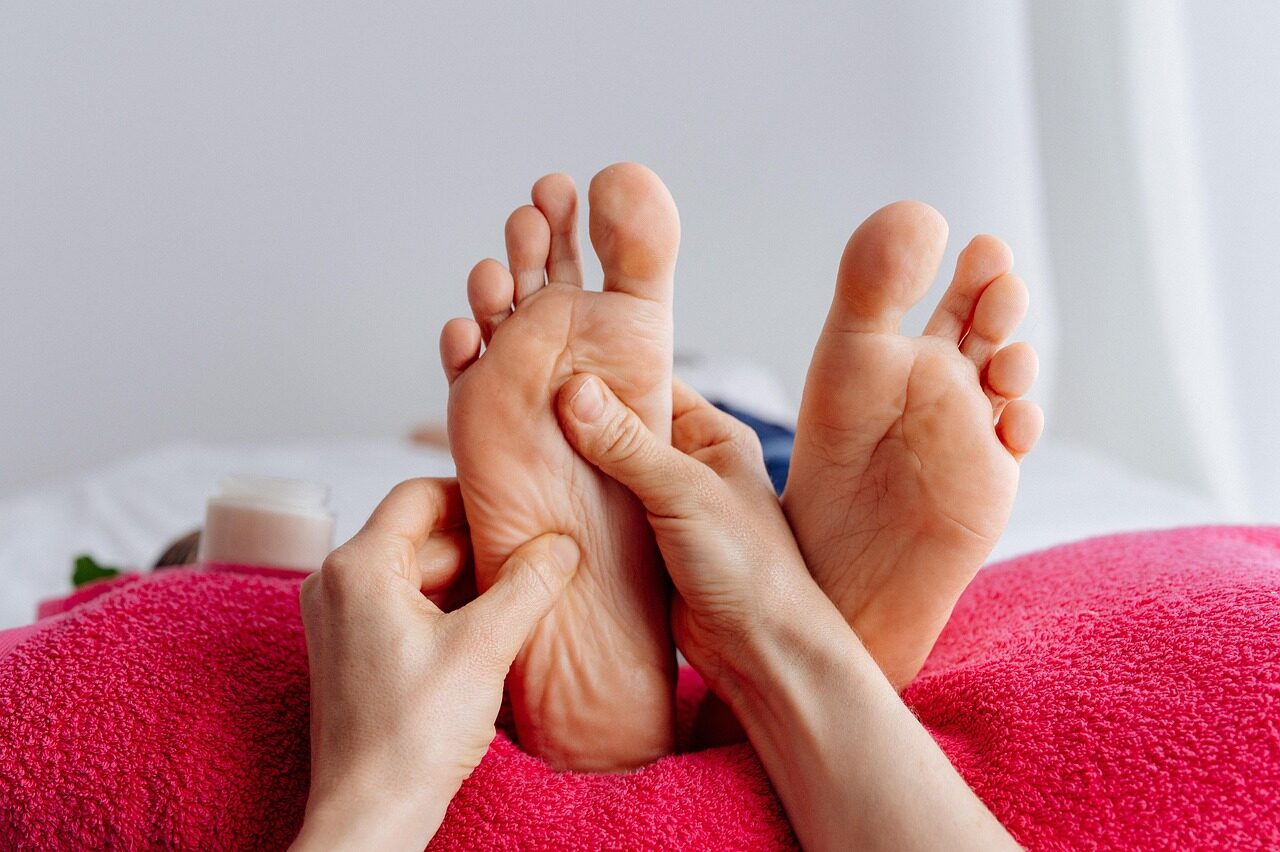
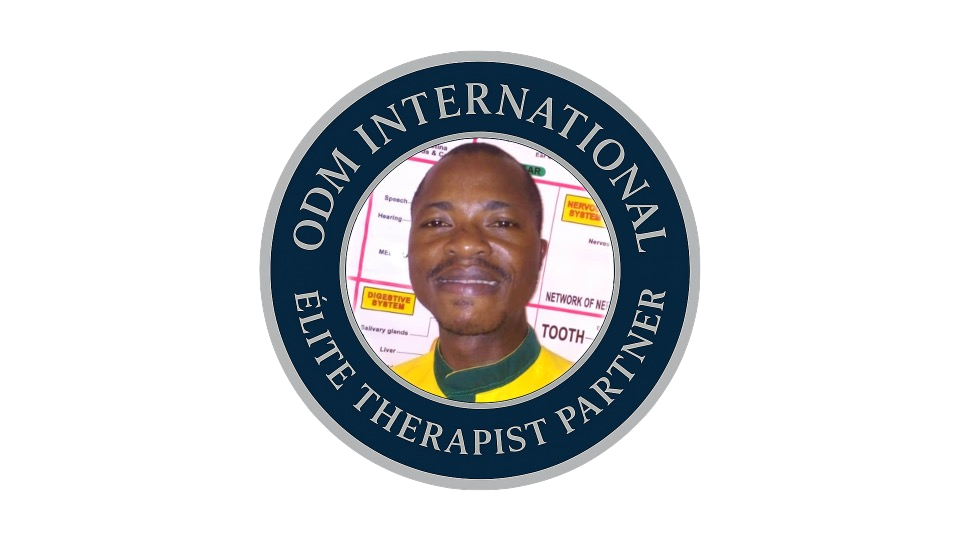
8 novembre 2025, PRATICA DI RIFLESSOLOGIA E MASSAGGIO TERAPEUTICO
“I piedi, organi di guarigione.”
La riflessologia è una pratica delicata, efficace e accessibile per la cura del corpo, della mente e dello spirito.
Applicando pressione sulle zone riflesse di viso, orecchie, mani e piedi, influenza tutti gli organi del corpo.
Attiva una sana circolazione sanguigna, favorendo così l’apporto di ossigeno, ormoni e anticorpi alle cellule del corpo e aiutando a eliminare tossine e altre sostanze nocive e inquinanti.
Oggi la riflessologia è una risorsa preziosa nella prevenzione e nel supporto della salute umana e del benessere generale.
Questa pratica è intrisa di luce, ripristinando così la salute naturale nella vita quotidiana.
La sua origine risiede nell’antica medicina orientale, che si basa sulla filosofia dei cinque elementi (terra, metallo, acqua, legno e fuoco), la cui idea fondamentale è che i piedi siano essenziali per la salute. Posso affermare senza esagerare che praticando questa terapia ora, si può ottenere un vero tesoro: una “salute incrollabile”, resistente a tutte le malattie. Anche se si è malati, ci si può sentire così meglio che non ci si riconosce nemmeno.
Consapevoli dei benefici di questa terapia, si lavora pazientemente ed elimina le tossine accumulate per raggiungere una salute incrollabile.
In questo modo, si possono eliminare tutte le fonti di malessere e vivere tutta la vita in ottima salute. Ecco perché consiglio la riflessologia plantare, in particolare quella plantare.
In effetti, ci sono tre motivi per consigliare il massaggio ai piedi.
Il primo motivo: non ci sono effetti collaterali nel trattamento dei piedi. Il secondo motivo è che i piedi sono la parte più importante del corpo per la circolazione sanguigna. Le anomalie del corpo vengono rilevate più facilmente lì. Il terzo motivo: chiunque, in qualsiasi momento, può praticare facilmente questa tecnica.
Il principio è semplice: premere e massaggiare per rimuovere le tossine.
La riflessologia plantare e il massaggio sono quindi essenziali per tutti, indipendentemente dall’età o dal sesso. Oggi siamo convinti che i trattamenti moderni presentino carenze ed effetti collaterali. Spesso questi trattamenti ci avvelenano più di quanto sembrino guarirci. Molti prodotti chimici, nella maggior parte dei casi, leniscono solo i disturbi e raramente guariscono il corpo, la mente e l’anima. Per non parlare delle conseguenze a lungo termine che ci lasciano. La riflessologia plantare e il massaggio hanno principalmente un effetto preventivo e supportano la salute umana senza avvelenare o richiedere sforzi aggiuntivi.
Per completare la terapia e ottenere i migliori risultati, bere più di 500 ml di acqua tiepida dopo ogni seduta.
Si raccomanda una durata minima di trenta minuti.
La riflessologia e il massaggio non sostituiscono le cure mediche.
La salute e il benessere dipendono da una buona circolazione sanguigna.
👉 Deo Roméo ADJIBADJI, 🇧🇯 ODM International Élite Therapist Partner
30 ottobre 2025, La Memoria del Corpo
Ci sono memorie che non si trovano nei pensieri, ma nei tessuti. Memorie che abitano il corpo, che si fanno tensione nelle spalle, respiro trattenuto, peso nello stomaco.
Sono storie silenziose, esperienze vissute e mai completamente elaborate. Il corpo le custodisce con fedeltà, come se tenendole potesse proteggerci da ciò che un tempo è stato troppo.
Nel mio studio mi capita spesso di vedere quanto questa memoria corporea influenzi la crescita, la relazione, la capacità di stare nel mondo. Un bambino che si chiude al contatto, un adulto che non riesce mai a rilassarsi: entrambi raccontano, con il corpo, qualcosa che la mente non ha ancora parole per dire.
Il corpo, in fondo, non mente. Sa prima di noi quando ci sentiamo al sicuro e quando no.
Negli ultimi anni, le neuroscienze e la psicologia somatica ci hanno offerto strumenti preziosi per comprendere questo dialogo sottile tra corpo e mente. L’approccio polivagale, ad esempio, ci mostra come il sistema nervoso cerchi costantemente equilibrio tra protezione e apertura.
E qui l’incontro tra professionisti e corpo diventa un terreno fertile: attraverso il tocco, il movimento, la postura, il corpo può ritrovare vie di regolazione che la sola parola, a volte, non basta a riattivare.
La guarigione — quella vera — non passa solo dal comprendere, ma dal sentire di nuovo. Sentire il corpo che si scioglie, il respiro che torna profondo, il ritmo interno che si fa più lento. È in quel momento che la memoria smette di essere trauma e diventa conoscenza di sé.
Riconnettersi al corpo non è un esercizio tecnico, è un atto di fiducia. Un modo per dirsi: posso stare qui, nel mio corpo, nel mio tempo, nella mia storia. E da lì, ricominciare.
Il percorso per farlo può essere delicato, ma mai solitario: quando mente e corpo tornano in dialogo, anche la vita torna a scorrere.
Articolo della Dr. Samantha Peroni 🇮🇹
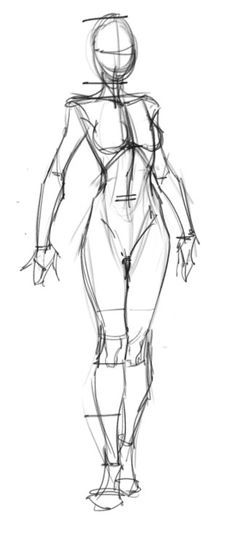

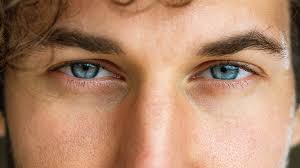

16 ottobre 2025, Il potere dello sguardo nell’accoglienza terapeutica
Nel momento in cui un cliente entra nel nostro studio, lo sguardo del terapista rappresenta il primo canale di contatto, il primo “abbraccio” simbolico: uno spazio in cui sentirsi visti, riconosciuti e accolti per ciò che si è, senza giudizio.
È attraverso di esso che si trasmettono sicurezza, attenzione e disponibilità all’ascolto — prerequisiti fondamentali per instaurare una relazione autentica e significativa.
Da un punto di vista pedagogico, lo sguardo è considerato uno strumento educativo potente: riconosce la persona nella sua interezza, la legittima come soggetto attivo del proprio percorso e apre lo spazio alla fiducia reciproca. Guardare l’altro con intenzionalità significa offrirgli la possibilità di sentirsi visto, accolto e accompagnato nel processo di cambiamento.
È lo sguardo che dice: “Tu conti. Sei qui, e io ci sono con te.”
Sul piano psicologico, invece, lo sguardo empatico ha una funzione di co-regolazione emotiva. Un contatto visivo accogliente e stabile favorisce il senso di sicurezza interna, riduce l’attivazione difensiva e prepara il terreno per un dialogo autentico. In questo modo, la relazione terapeutica diventa un contesto di contenimento e di miglioramento; si crea quel campo relazionale in cui la persona può iniziare a sciogliere le difese e contattare le proprie risorse interiori.
Accogliere con lo sguardo non è quindi un gesto gentile, è un atto terapeutico, una forma di cura profonda che precede ogni parola e accompagna ogni passo del percorso.
È il punto d’incontro tra sapere professionale e sensibilità umana — là dove comincia davvero il processo di cambiamento.
Non dimentichiamolo.
5 ottobre 2025, Metodo Born,caso clinico pediatrico di successo, a cura del Dr. Boris Alfonso Ania 🇮🇹
METODO BORN e CASO CLINICO PEDIATRICO DI SUCCESSO
Il riposo ritrovato di una bambina di 11 mesi
Ringrazio personalmente Federico e Denise per la testimonianza dell’applicazione del Metodo BORN.
”Sono felice di condividere un caso di successo che testimonia l’efficacia del trattamento che ho appreso.
Di recente, ho avuto l’opportunità di trattare una bambina di 11 mesi che soffriva di un sonno irregolare, rendendola nervosa e iperattiva.
I genitori, esausti e preoccupati, si sono rivolti a me per cercare una soluzione.
Il Trattamento
Su consiglio di Boris, ho seguito un protocollo specifico per la fascia d’età 0-3 anni:
Prima seduta: è stata eseguita la procedura FRT 1.
Seconda seduta: è stata eseguita la procedura FRT 2.
Il Risultato
I risultati sono stati sorprendenti e immediati. La bambina ha iniziato a dormire serenamente per tutta la notte e a svegliarsi con molta calma al mattino.
La sua tranquillità si è estesa anche al giorno, rendendola più serena e affettuosa.
I genitori sono grati e sollevati per aver ritrovato il loro riposo e la serenità in casa.
Ringrazio di cuore Boris per la sua guida e i preziosi insegnamenti che continuano a produrre risultati così importanti.”
Federico Corioni
PRECISO CHE L’IMMAGINE DEL BAMBINO NON è REALE MA CREATA GRAFICAMENTE


19 settembre 2025, teo walking: a cura del Dr. Dario Farinella 🇮🇹
Viene definita Toe-Walking la deambulazione che avviene prevalentemente in punta di piedi. La tendenza all’andatura in punta di piedi è piuttosto frequente nei bambini piccoli, nella fase iniziale della deambulazione autonoma. Nella maggior parte dei casi, tale tendenza si riduce progressivamente con la crescita fino ad arrivare a un’andatura normale, generalmente entro l’età di 2-3 anni. Pertanto, per convenzione, è comune consigliare di indirizzare verso ulteriori accertamenti quei bambini che continuino a manifestare tale tendenza oltre l’età di 2-3 anni.
Trattamento
modifica
Esistono differenti opzioni di trattamento. Per i casi lievi è possibile solo effettuare controllo evolutivo. Per i casi più severi, le possibilità comprendono: stretching, tutori ortopedici, gessi correttivi, tossina botulinica, interventi chirurgici correttivi. Sono stati recentemente sviluppati tutori ortopedici innovativi minimamente invasivi in grado di esercitare un momento di flessione dorsale sul piede sfruttando le proprietà elastiche del carbonio, una specifica ortesi plantare ed una scarpa con opportune allacciature
Qui nel video si vede prima del primo trattamento manipolativo e il giorno dopo al trattamento.
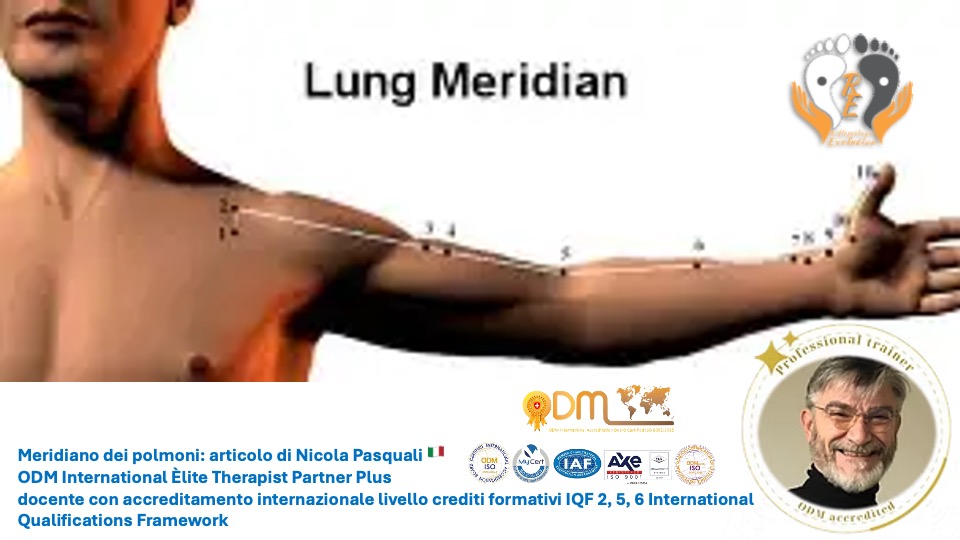
16 agosto 2025, meridiano dei Polmoni a cura di Nicola Pasquali 🇮🇹
Il meridiano del polmone è il primo della sequenza dei meridiani principali. Rappresenta l’origine dei meridiani e, attraverso il respiro, l’origine della vita. ,,,,